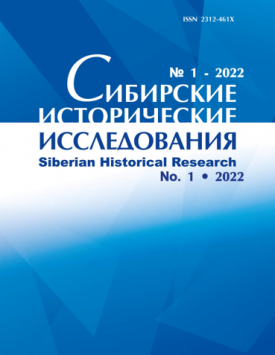The changing identity of the community of the St. Augustine, Province of Quebec, Canada
In 1965 I was involved in a community study of the village of St. Augustine which looked like a Euro-Canadian English-speaking community whose members had a diversity of origins: English, French Canadian, Irish, Jersey and a possibility of a hidden Inuit ancestry. Thirty years later, I have done a thorough genealogical research which proved that at that time half of the community members had two couples as their ancestors: one full blood Inuit and one half-blood. A few years after the 2003 Powley decision by the Supreme court of Canada concerning the hunting rights of a Metis community, I prepare an expert report for a court case concerning members of the St. Augustine community which had been arrested and fined for fishing illegally by Canadian fisheries officers. Unable to have those rights recognized by the Government of Canada, some leaders of the community decided to claim full Inuit Aboriginal rights and hired a lawyers' firm to defend these rights and to work on a new approach for their claims. The content of my paper will be threefold: 1) a presentation of the evolution of the ethnic identity of the St. Augustine community: 2) the Inuit culture heritage and the importance of fishing as the main economic activity; 3) a link with similar claims of Inuit aboriginal rights by communities of Southern and Central Labrador.
Keywords
Communaute de St. Augustine,
Euro-Canadiens,
Metis,
heritage cul-turel inuit,
communaute Nunamit,
organisation NunatuKavutAuthors
| Charest Paul | Universite Laval | |
Всего: 1
References
Affaire Powley // Encyclopedie canadienne. 2018. n.p, site internet consulte le 3 novembre 2021. URL: https://www.thecanadianencyclopedia.ca/fr/article/affaire-powley
Barkham S.L. (1980) A note of the strait of Belle Isle during the period of Basque contact with Indians and Inuit, Etudes Inuit Studies, Vol. 4, no. 1-2, pp. 51-58
Bowen N.H. (1855) The Social Conditions of the Coast of Labrador, Transactions of the Literary and Historical Society of Quebec, no. 4, pp. 329-341
Bussieres P. (1963-1964) La population de la Cote-Nord, Extrait des Cahiers de Geographie de Quebec. Avril-Septembre 1963. Vol. VII. № 4, Octobre 1963-Mars 1964. Vol. VIII. № 1
Carpenter Ch.C. (1856-1910) Daily Journal of Charles C. Carpenter, Labrador Mission, 1856, 1858, 1859, 1861, 1862-1864, 1865, 1889, 1909. Deux microfilms, Bibliotheque et Archives nationales du Canada. Ottawa
Chappell E. (1818) Voyage of His Majesty's Ship Rosamond to Newfoundland and the Southern Coast of Labrador of which Countries no Account has been Published by any British Traveller Since the Reign of Queen Elizabeth. London: J. Mawman
Charest P. (1976) Strategies d'adaptation generalisees et ecosystems spesialises: le cas de la Cote-Nord du golfe Saint Laurent, Anthropologie et societes, Vol. 1, no. 1, pp. 19-49. doi:10.7202/000848ar
Charest P. (1998) Les Inuit du Labrador canadien au milieu du siecle dernier et les descendants de la Basse-Cote-Nord, Etudes Inuit Studies, Vol. 22, no. 1, pp. 5-36
Charest P. (2005) La communaute metisse inuit de Saint-Augustin (Basse-Cote-Nord): Genese et caracteristiques culturelles, Rapport d'expertise
Charest P. (2015) L'heritage culturel inuit au Labrador meridional, Etudes Inuit Studies, Vol. 39, no. 1, pp. 201-224
Dorais L.-J. et Cere V. (2012) Quelques aspects du contact culturel dans la region du detroit de Belle Isle (Canada), Journal de la Societe des Americanistes, Vol. 98, no. 2, pp. 141166
Ferland J.B.A. (1859) Mission du Labrador, Rapport sur les missions du diocese de Quebec. Avril 1859, Vol. 13, pp. 65-139
Field E. (1849) Journal of the Bishop of Newfoundland's Voyage of Visitation and Discovery on the South and West Coasts of Newfoundland and on the Labrador, in the Church Ship ‘Hawk', in the Year 1848. The Society for the Propagation of the Gospel. London: Church in the Colonies XXI
Huard V.A. (1897) Labrador et Anticosti. Montreal: C.O. Beauchemin et Fils
Jordan R.H. et Kaplan S.E. (1980) An archaeological view of the Inuit/European contact period in Central Labrador, Etudes Inuit Studies, Vol. 4, no. 1-2, pp. 35-45
Junek O.W. (1937) Isolated Communities: A Study of a Labrador Fishing Village. New York: American Book Company
Kennedy J.C. (2015) Being and Becoing Inuit in Labrador, Etudes Inuit Studies, Vol. 39, no. 1, pp. 225-242. https://doi.org/10.7202/1036085ar
Martijn Ch.A. (1980) La presence inuit sur la Cote-Nord du Golfe St-Laurent a l'epoque his-torique, Etudes Inuit Studies, Vol. 4, no. 1-2, pp. 105-125
McKenzie R. (ed.) (1984) The St. Lawrence Journals of Captain Henry Wolsey Bayfield (1829-1853). Toronto: The Champlain Society
Nunamit Corporation. 2021. Site internet consulte le 3 novembre 2021. Corporation https://numamitcopr.com
NunatuKavut. Unveiling NunatuKavut: Document in Pursuit of Reclaiming a Homeland Describing the Lands and People of South/Central Labrador. s.l., NunatuKavut. 2010
Pintal J.-Y. (1998) Aux frontieres de la mer, la prehistoire de Blanc-Sablon. Quebec: Direction des relations publiques Ministere de la Culture et des Communications
Robertson S. (1855 (1841)) Notes on the Coast of Labrador (Read, 16th January 1841, Transactions of the Literary and Historical Society of Quebec, Vol. 4, no. 1, pp. 27-49
Stearns W.A. (1884) Labrador: A Sketch of its Peoples, its Industries and its Natural History. Boston: Lee and Shepard
Tremblay M.-A., Charest P., Breton Y. (1969) Les changements socio-culturels a Saint-Augustin: Contribution a l'etude des isolats de la Cote-Nord du Saint-Laurent. Quebec: Les Presses de l'Universite Laval
Trudel F. (1980) Les relations entre les Frangais et les Inuit au Labrador meridional, Etudes Inuit Studies, Vol. 4, no. 1-2, pp. 135-145

